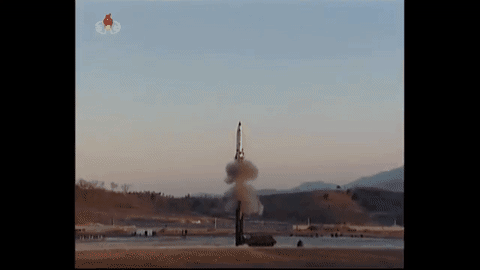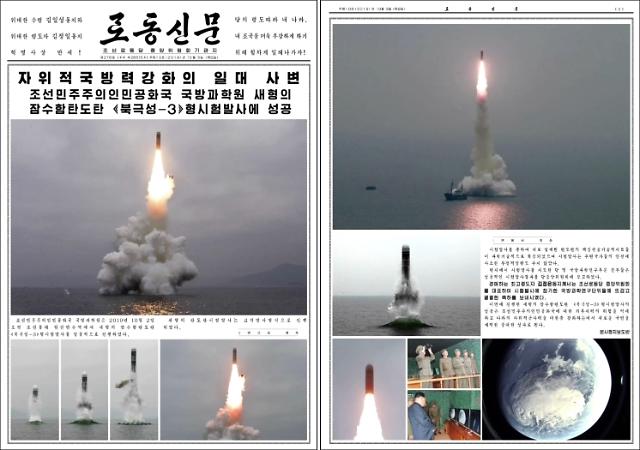
[Footage edited from original video uploaded by Uriminzokkiri / Edited by Park Sae-jin]
North Korea is presumed to have learned "a great deal" from what appeared to be the successful test of a new intermediate-range ballistic missile that demonstrated a much higher degree of mobility, survivability, and responsiveness than old models, a US expert said.
Pictures and TV footage released by Pyongyang's state media showed the missile was moved on a newly developed transport erector launcher (TEL) before being launched at a vertical angle.
North Korea said the new ground-based missile "Pukguksong-2" with an improved solid fuel engine capable of carrying a nuclear warhead more accurately was based on technology used for a submarine-launched ballistic missile (SLBM) launched in August last year.
The Pukguksong-1 (KN-11, or Pole Star), an SLBM powered by solid fuel, was based on Russia's SS-N-6 missile.
The new missile has "little in common" with North Korea's medium-range Rodong or the Musudan with an estimated range of more than 3,000 kilometers (1,860 miles), John Schilling said in an article published by 38 North, the website of a US research institute.
Foreign and South Korean experts agree solid-fuel missiles require less preparation time than liquid-fueled rockets. They believe the Pukguksong-2 will pose a great security threat as it can be fired from mobile launchers easy to move around.
"What this missile brings to the table is a much higher degree of mobility, survivability, and responsiveness than" Rodong, Schilling said.
"North Korea's engineers presumably learned a great deal from this test, which appears to have been basically successful. We do not know how much more they need to learn to be confident that the new missile will function reliably in combat," he said.
The Pukguksong-2 was also tested from a cold-launch canister system carried on a tracked TEL vehicle, which would provide substantially greater cross-country mobility than Rodong's wheeled TEL, Schilling said.
The solid-fuel missile is more robust and does not need tanker trucks to carry propellant, he said, adding it can be launched in perhaps five minutes.
"All of these factors would make it much harder to find and preemptively destroy the Pukguksong-2. It takes more than a single test to ready a missile for operational service," Schilling said.
Seoul's joint chiefs of staff (JCS) said the new missile is estimated to have a range of 2,500-3,000 kilometers, shorter than Musudan's, though further analysis is necessary to determine whether it can be fitted with a nuclear warhead.
The North's SLBM program has been a prime security concern in Seoul and Washington, though US experts believe Pyongyang is still years away from the operational deployment of a submarine carrying ballistic missile for wartime missions.
Lim Chang-won = cwlim34@ajunews.com


